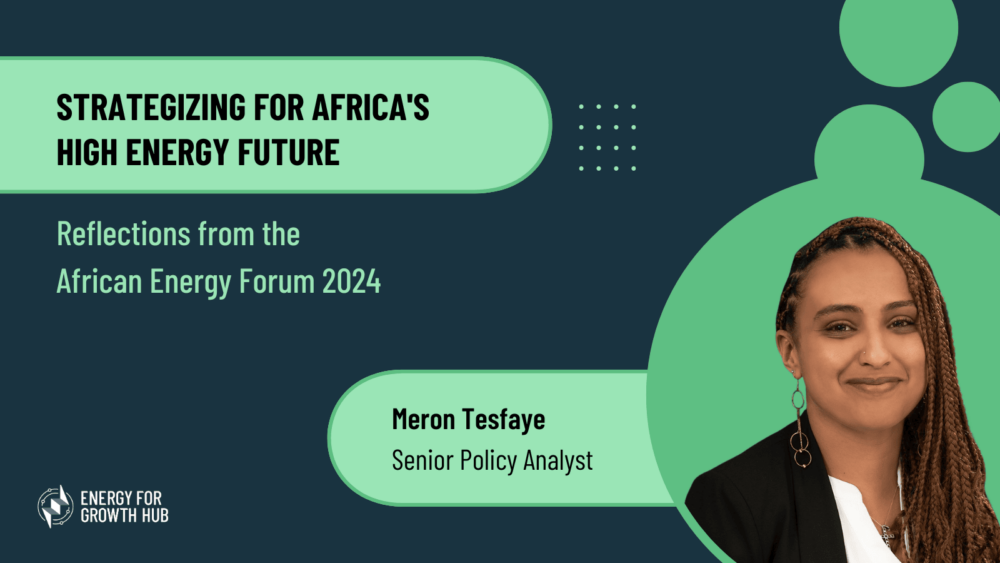During the week of June 24, 2024, I attended the African Energy Forum for the first time. While the kindness of my fellow attendees and the mesmerizing beauty of Barcelona were unforgettable, several discussion points and facts stood out as well:
- Transmission: Africa’s electricity transmission and distribution losses can be over 30%. For most developed nations, this value is often less than 10%.
- Battery: Despite the continual promotion of Africa’s renewable potential and need for grid balancing, less than 1 GW of installed battery storage exists on the continent. Balance of plant costs could constitute 40% of the total cost, and project development timelines that can take more than 5 years remain an outstanding barrier.
- Clean hydrogen: The new rule of thumb to keep in mind is 1-10-20-30, i.e., to produce 1% of current hydrogen via renewables requires 10 GW of electrolyzers, 20 GW of renewable electricity, and $30 billion in investment, with electricity production being the largest cost contributor.
- Oil & gas: Although emissions within the continent are low, emissions associated with Africa’s oil and gas extraction and export are high.
- Project financing: Despite accounting for only 3% of global energy investments now, Africa requires $200 billion in annual investments by 2030 to achieve its electrification goals (International Energy Agency, IEA). Of this, $130 billion is expected to come from the private sector, even though the current contribution from the private sector is significantly lower.
- Project risk: Over reliance on hard foreign currency, inflation, increasing debt, and bad sweetheart deals have resulted in higher investment risks. The IEA projects that $30-40 billion is needed for “de-risking” Africa, a value 2-3 times higher than that of Latin America. It is also true that Africa’s infrastructure projects have the lowest default rates in the world (5.5% according to the African Development Bank, AfDB) largely driven by the fact that they are over-engineered and take multiple years to complete.
- Impact to consumers: Inflation and currency challenges have resulted in energy procurement contract price increases, in some cases reaching a 30% increase from pre-COVID days, leading to higher power tariffs for consumers.
Given these facts, some conclusions (and notable statements) continue to resonate in my mind:
- “No transition without transmission”: Prioritizing and increasing investments in transmission and interconnection across countries ought to be the old-new technology we need to think about and do more of.
- As you charge, don’t forget to optimize: Increasing battery capacity in Africa requires significant capital investment. Equally important is establishing an ongoing technical, operation and maintenance ecosystem to perform augmentation and optimization every 3, 5, and 7 years as battery performance degrades.
- The thing about non-local hydrogen offtakers…: The majority of projects in Africa depend on non-African offtakers for clean hydrogen as initial consumers. However, the transition from external offtakers to local industrial end uses like steelmaking and ammonia production are uncertain at best.
- The gas narrative requires scrutiny: In South Africa, transitioning from coal to gas could potentially reduce emissions by up to 60%. Meanwhile, in Nigeria, improving grid stability is critical for reducing the carbon footprint from diesel. Addressing fossil fuel emissions is contextual and must also consider emissions from export projects, which are often financed by the same countries that restrict gas projects for local use.
- Risk vs. risk: Energy projects in Africa face both perceived and actual risks that must be differentiated. Challenges with energy investments are not unique to Africa; they are global in nature, exacerbated by economic fluctuations worldwide. Africa, with a significant under-electrified population, feels these impacts more acutely.
- Not all demand drivers are created equal: Commercial and industrial energy projects are crucial to project feasibility and securing bankability. However, it’s important to recognize that they alone cannot fully address the electrification challenge.
- The scale and success disparity: In Africa, projects and developers typically fit into two categories. On one hand, there are very small projects, often fully funded by grants and philanthropy. On the other hand, there are mega-projects that require extensive time and political capital, backed by large players with extensive project portfolios across the continent. These players often possess in-house contract development capabilities, integrated suppliers, and robust operations and maintenance frameworks, which help safeguard financial risks. However, this situation creates a notable gap in the market with no mid-sized players. It also poses challenges for the energy project pipeline, project scalability and replicability, and limits impactful projects.
- “Bad money is worse than no money”: Africa’s energy and economic ambitions require creative financial solutions. According to the AfDB, if pooled together, just a fraction of Africa’s critical mineral resources can unlock over a trillion dollars worth of capital for energy infrastructure. Some countries are already mitigating currency challenges creatively; for instance, most infrastructure projects in South Africa are financed in ZAR, facilitating more projects in local currency. Zimbabwe and Botswana have implemented royalty payment policies to retain local currency and minerals within the continent.
- It’s about integrated energy planning, plain and simple: No single current or future technology can address all energy challenges alone. Integrated energy planning is essential for contextually incorporating emerging energy solutions. Equally important is the health of African utilities as key institutions for a high energy continent.

